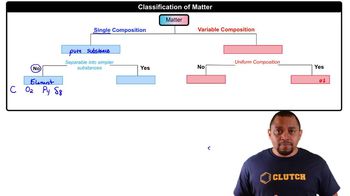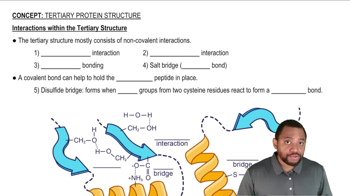Based on electronegativity differences, would you expect bonds between the following pairs of atoms to be largely ionic or largely covalent?
b. Ca and Cl
 Verified step by step guidance
Verified step by step guidance Verified video answer for a similar problem:
Verified video answer for a similar problem:



 1:51m
1:51mMaster Dipole Moment (Simplified) Concept 1 with a bite sized video explanation from Jules
Start learning